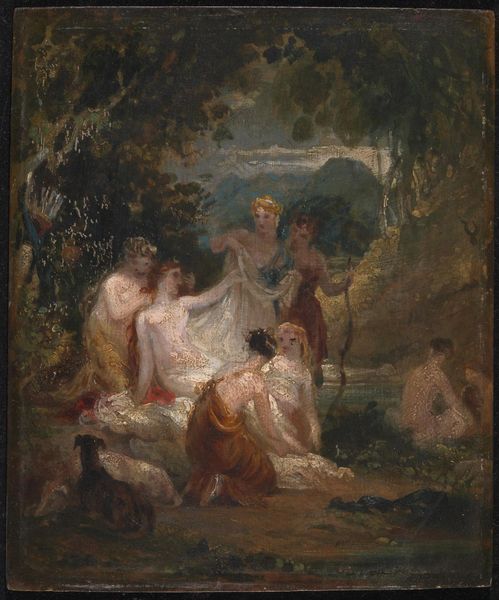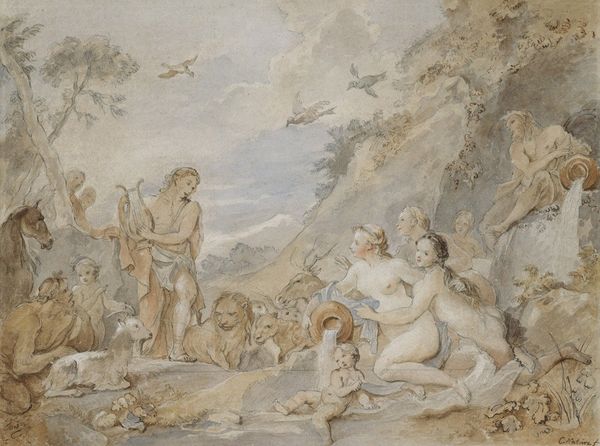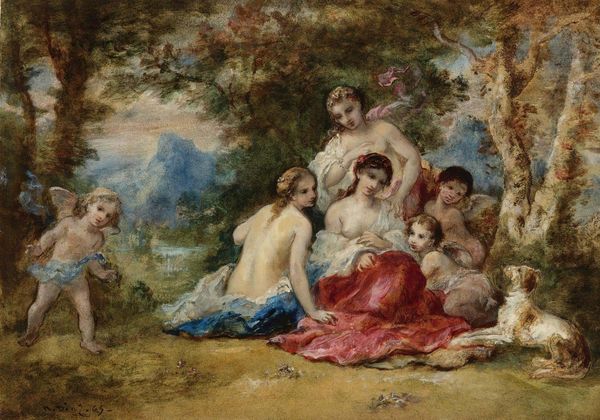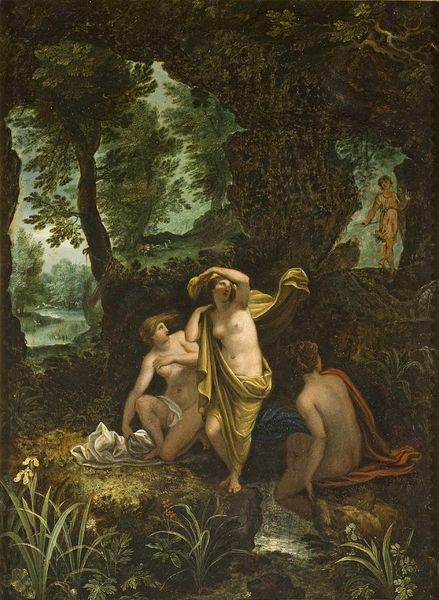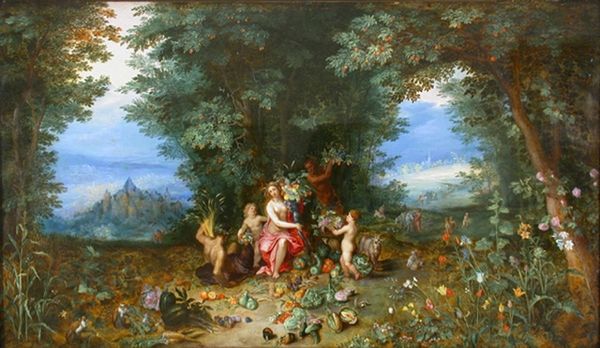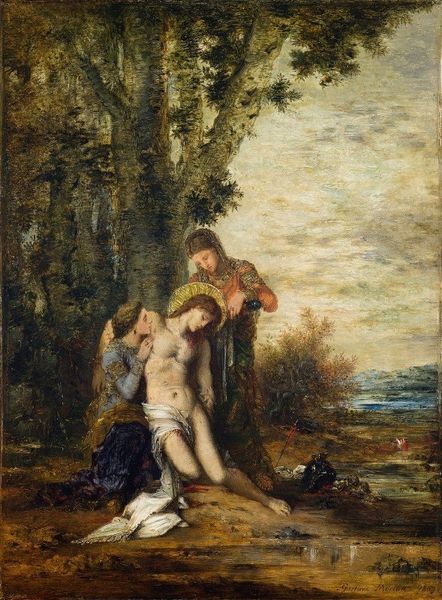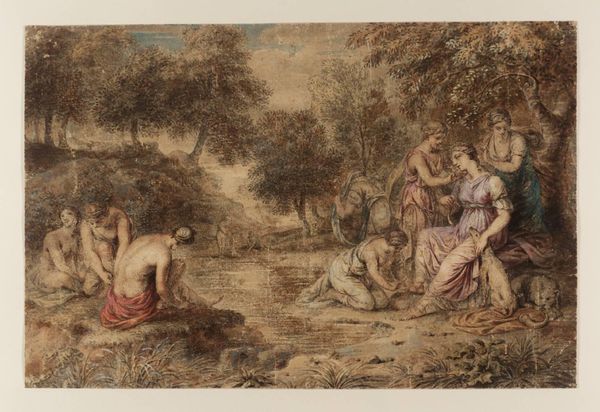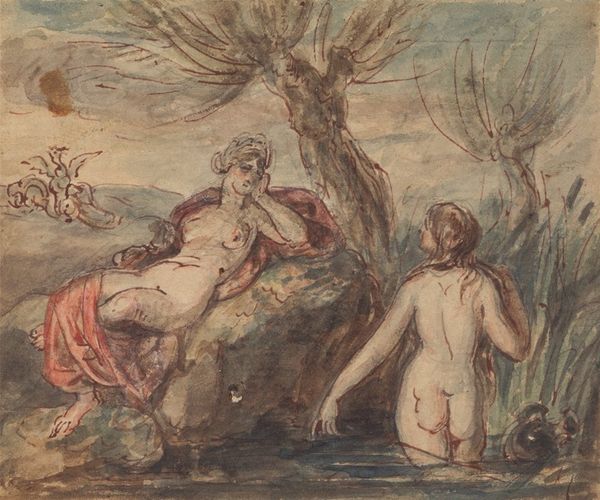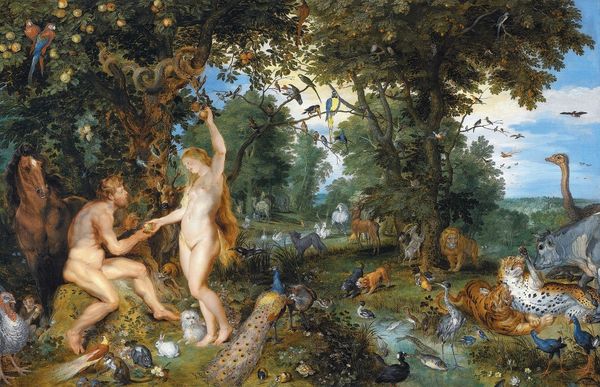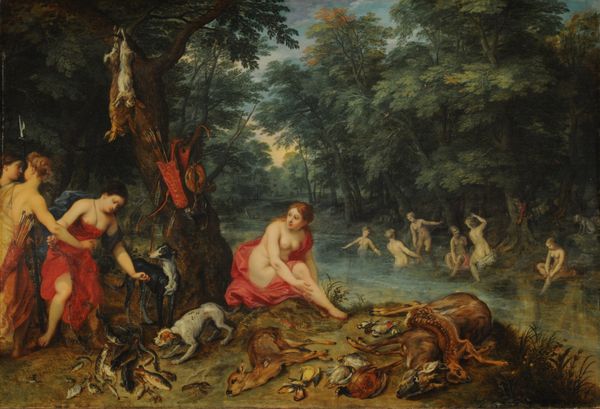
oil-paint
#
allegories
#
allegory
#
symbol
#
oil-paint
#
landscape
#
figuration
#
oil painting
#
mythology
#
symbolism
#
history-painting
#
academic-art
Copyright: Public domain
Editor: Here we have Pierre Puvis de Chavannes’ oil painting, *Allegory of Life.* It’s quite dreamlike, with muted tones and figures that seem to float within the landscape. How do you interpret this work in relation to the society of the time it was created? Curator: What strikes me immediately is the artist’s use of allegory. De Chavannes attempts to grapple with life’s big questions—birth, death, love, loss—through a visual language steeped in symbolism. Can we even look at it without considering the role of academic art? It's important to consider its relationship to the rapidly changing social and political landscape of late 19th-century France. Editor: In what way? Curator: Well, look at the figures themselves. Notice their whiteness and idealized forms. This is not just about aesthetics; it's about reinforcing certain notions of beauty, power, and belonging rooted in colonialism. Editor: I see your point. I didn’t consider the politics behind it so much, initially I just thought it looked kind of like something out of a classical myth. Curator: Exactly! Myths are never neutral. They reflect and perpetuate ideologies. How does the “allegory of life” differ for people from various social locations such as a woman compared to a man in this painting, for example? Or for people of color compared to white individuals? Considering this image with questions like that in mind opens it to relevant discourse, instead of just pretty or dreamlike! Editor: It is true! Now, it changes everything in the painting, including the initial impression that the artist had. Curator: Precisely! Looking critically is about challenging norms and seeking more profound understanding. Editor: That's given me a lot to think about! Thank you for your thoughts on that. Curator: Of course! Remember, art is never truly separate from the world it inhabits.
Comments
No comments
Be the first to comment and join the conversation on the ultimate creative platform.
